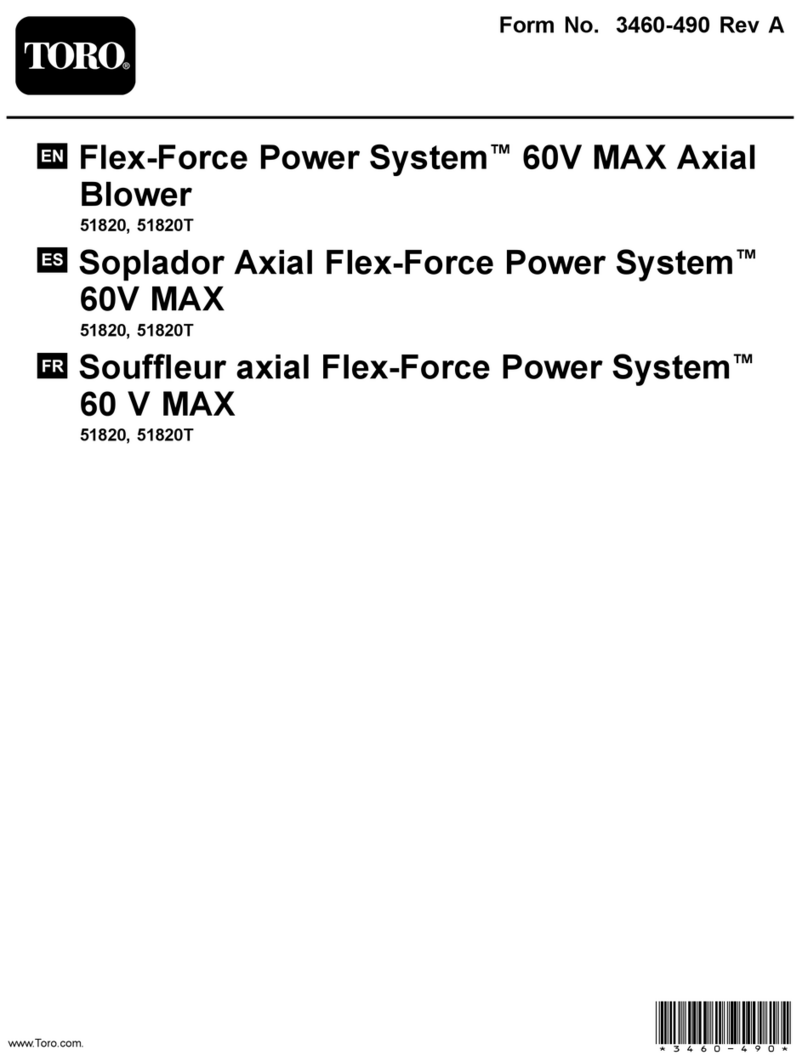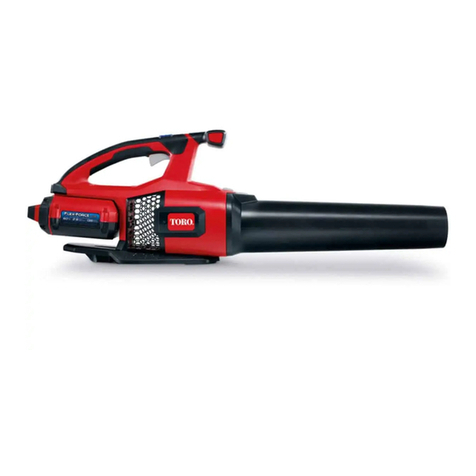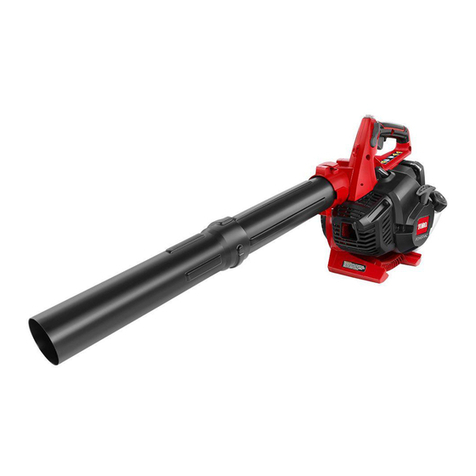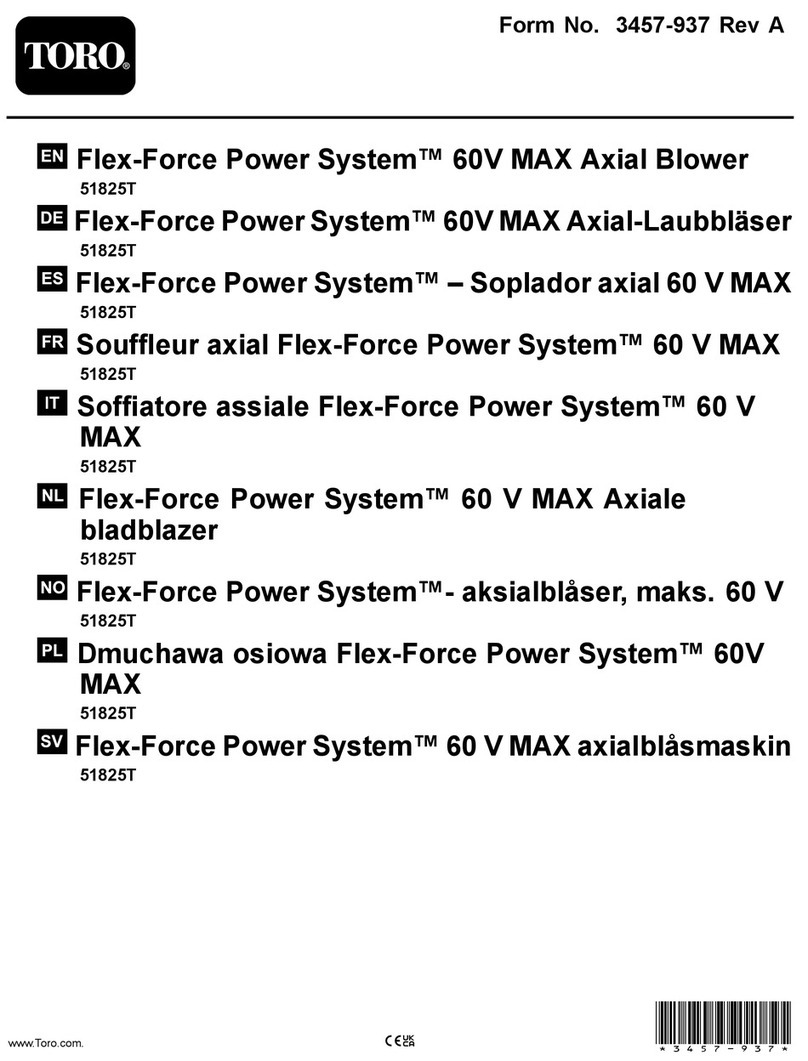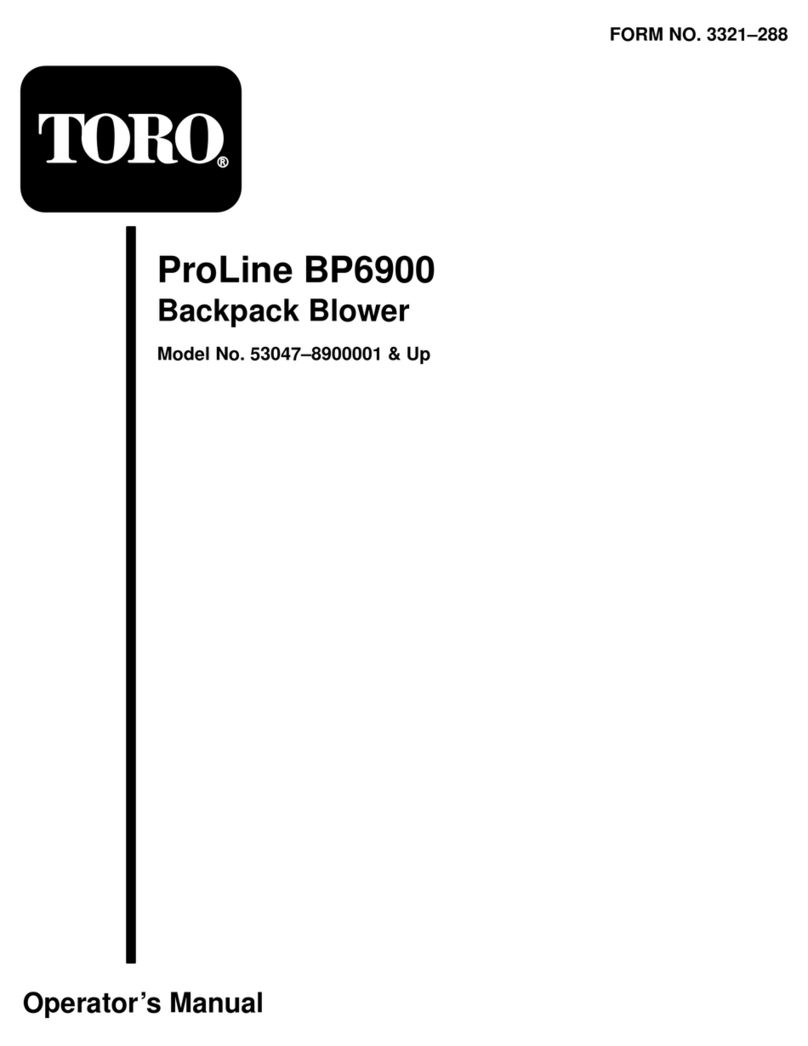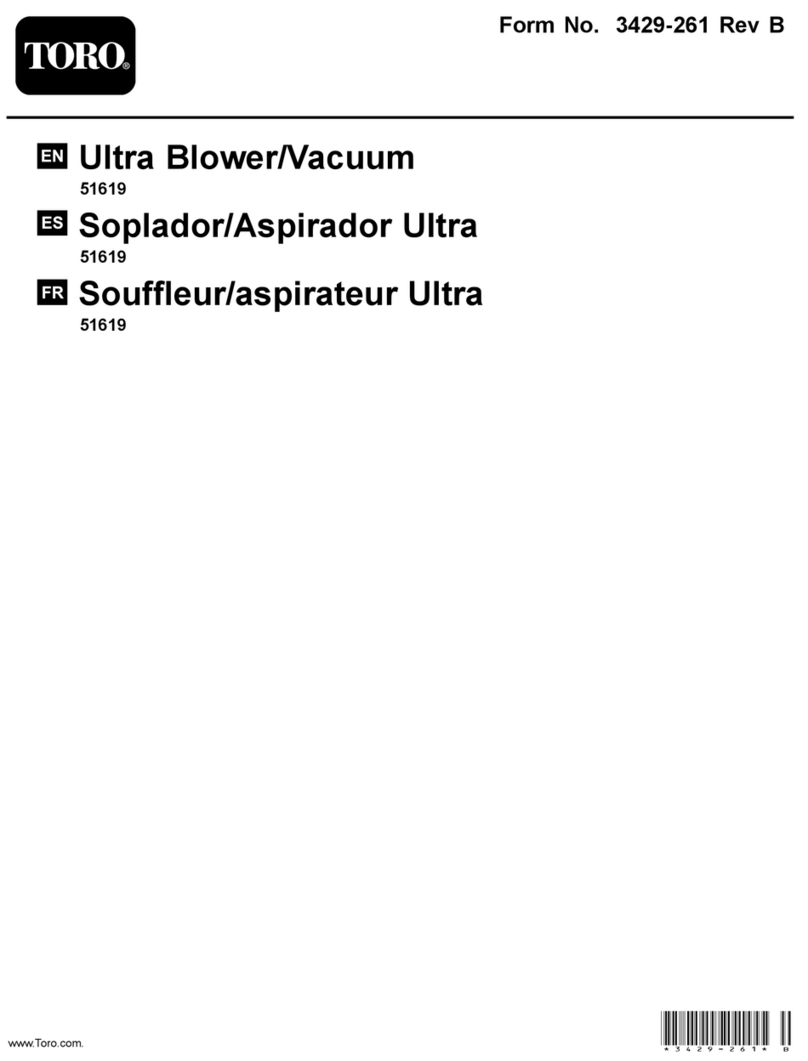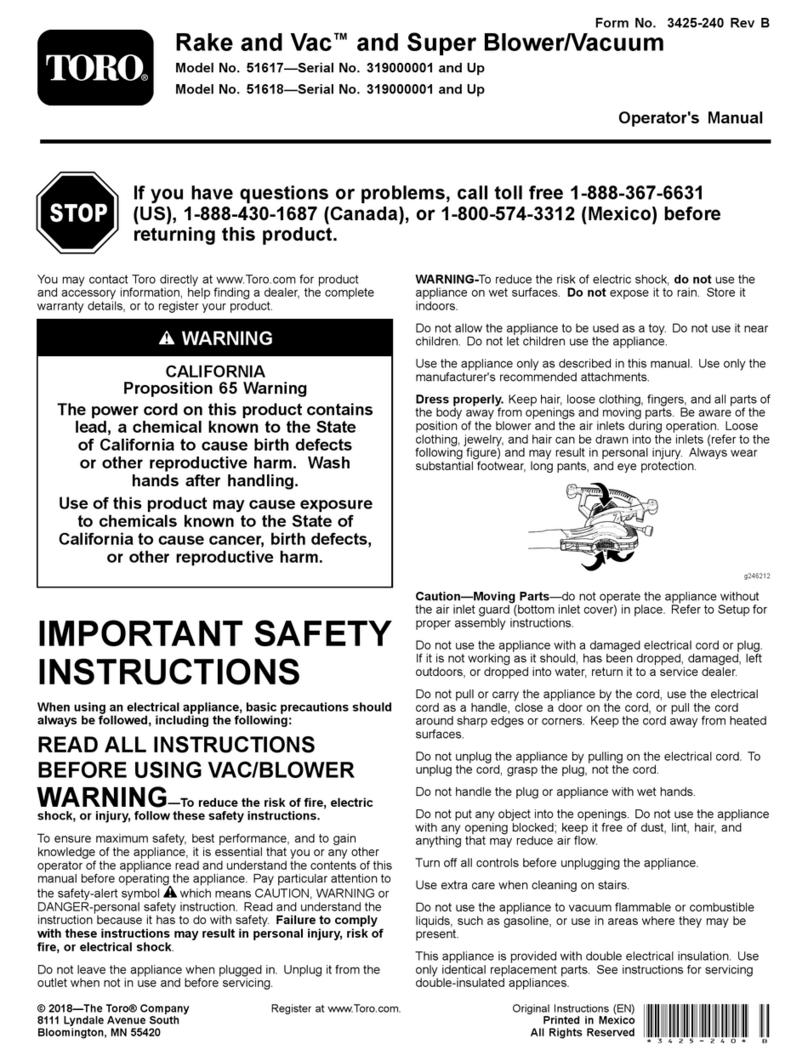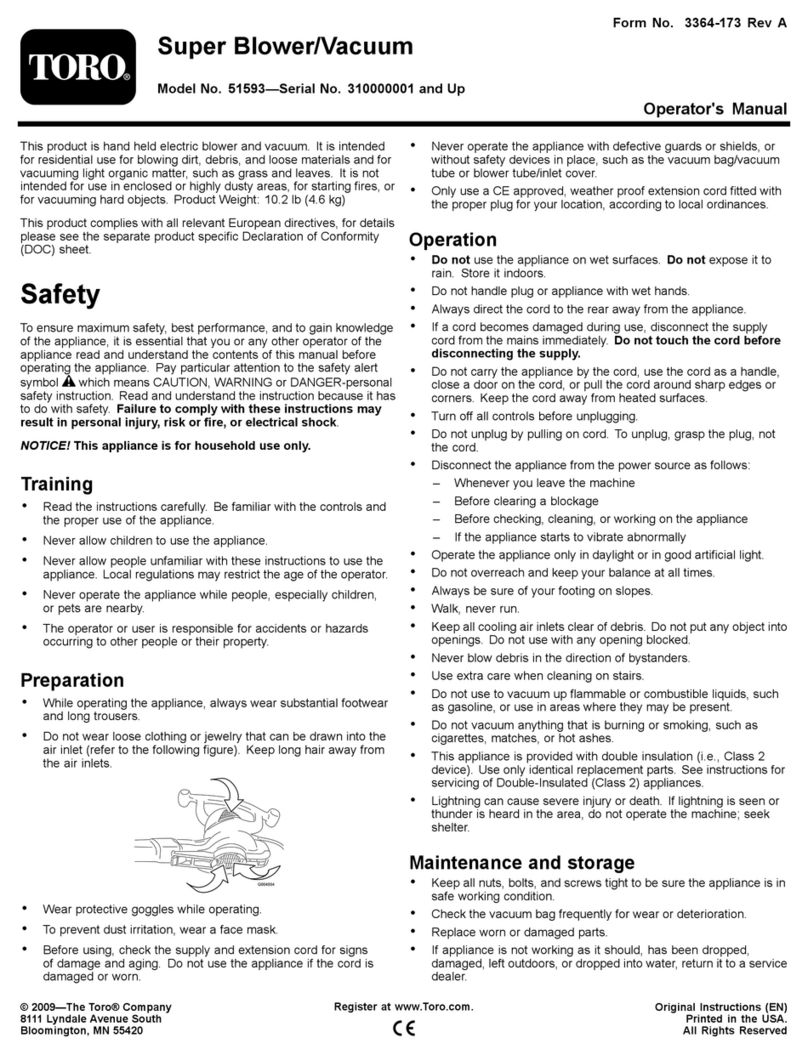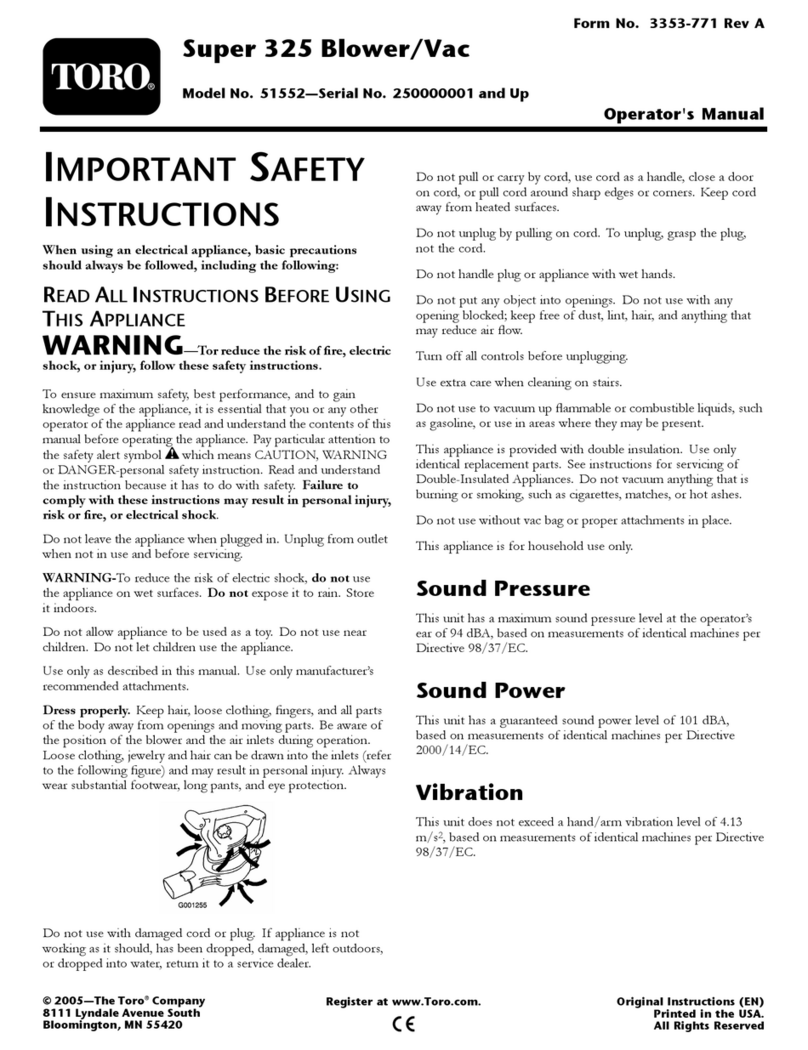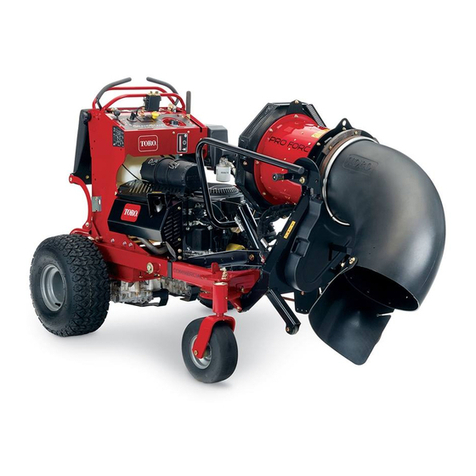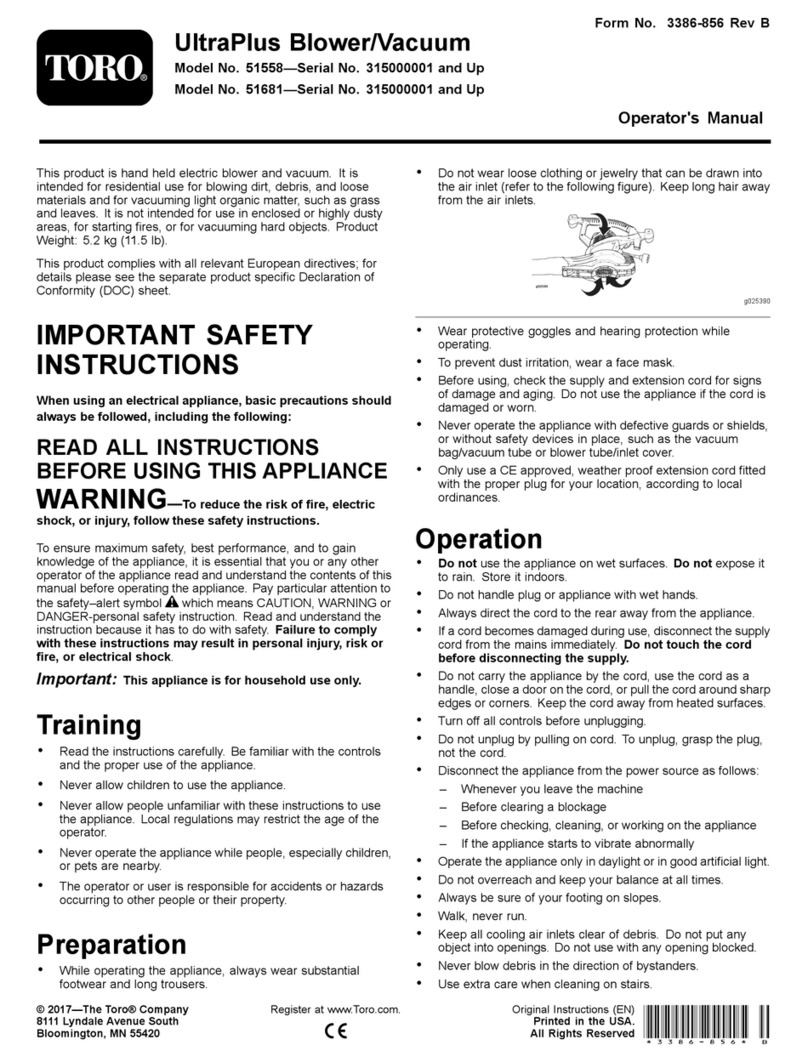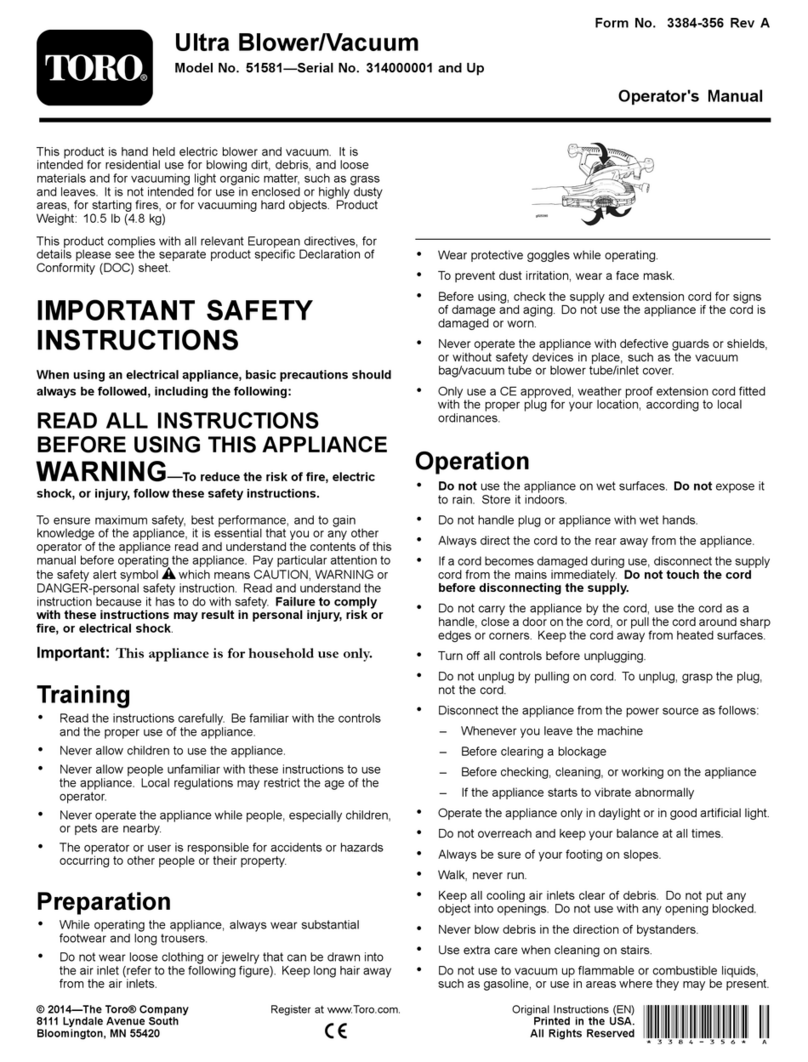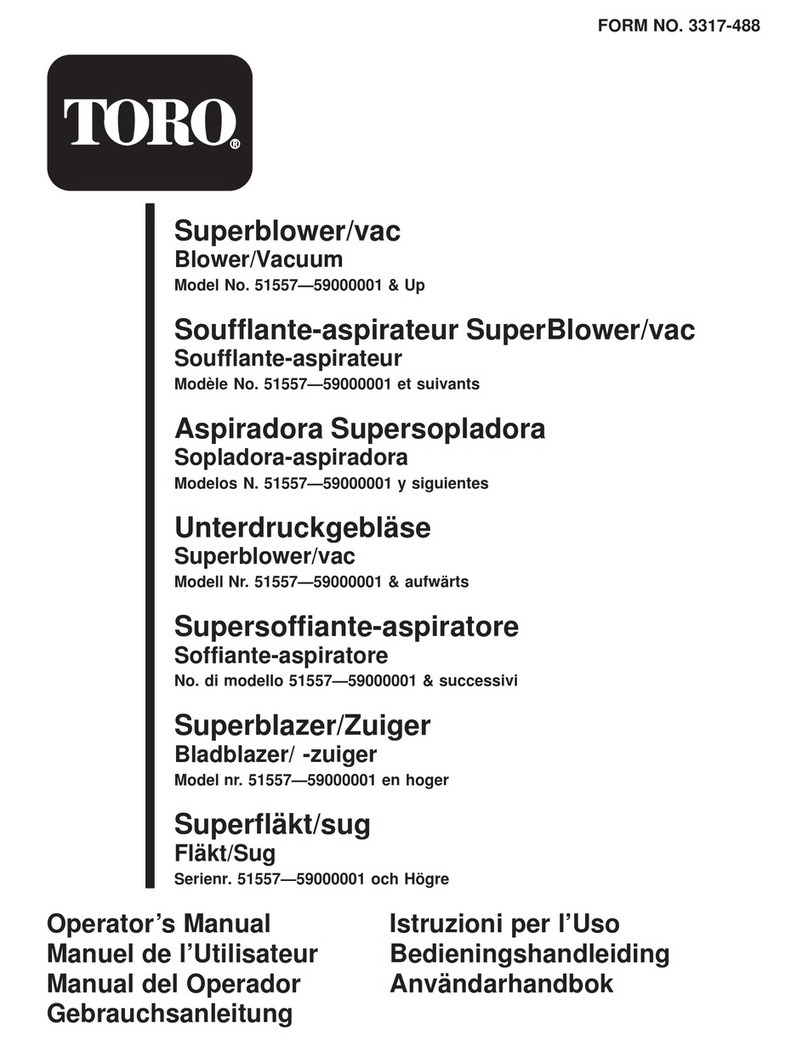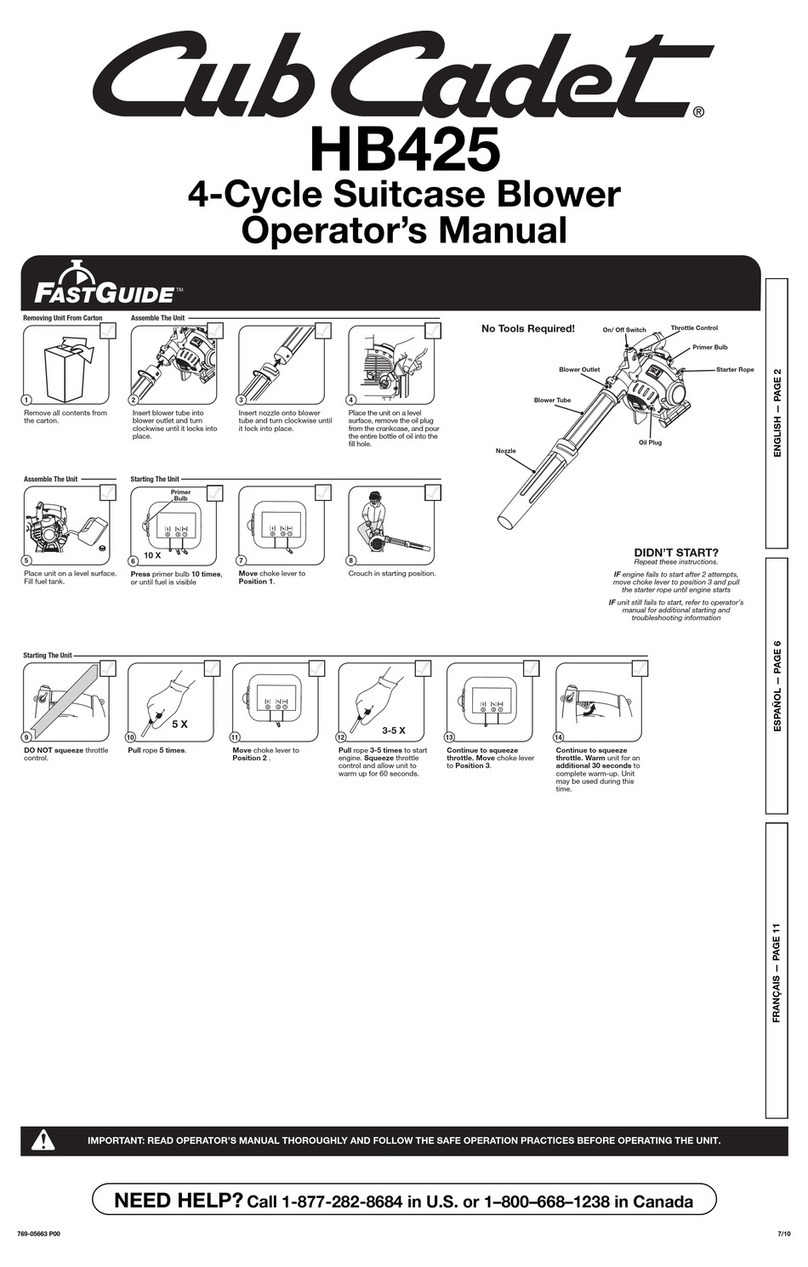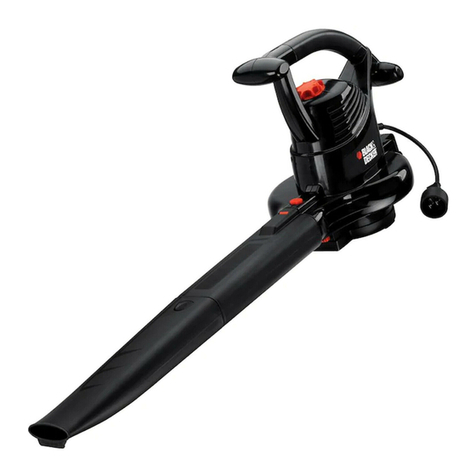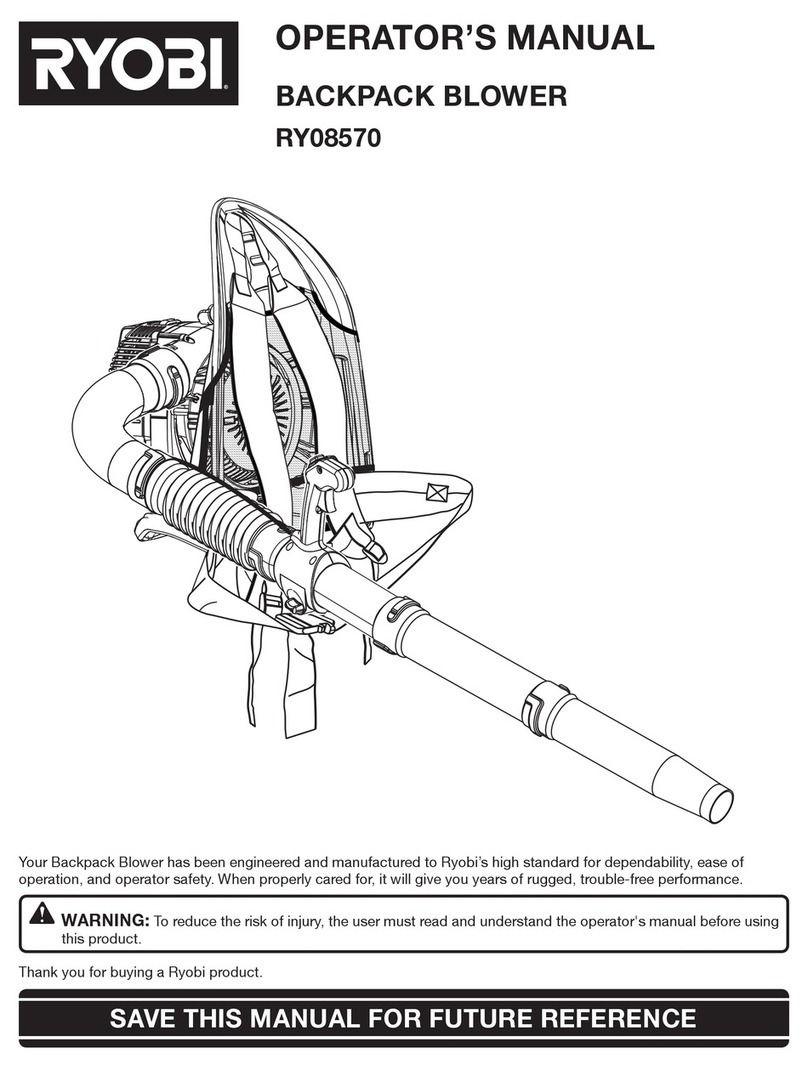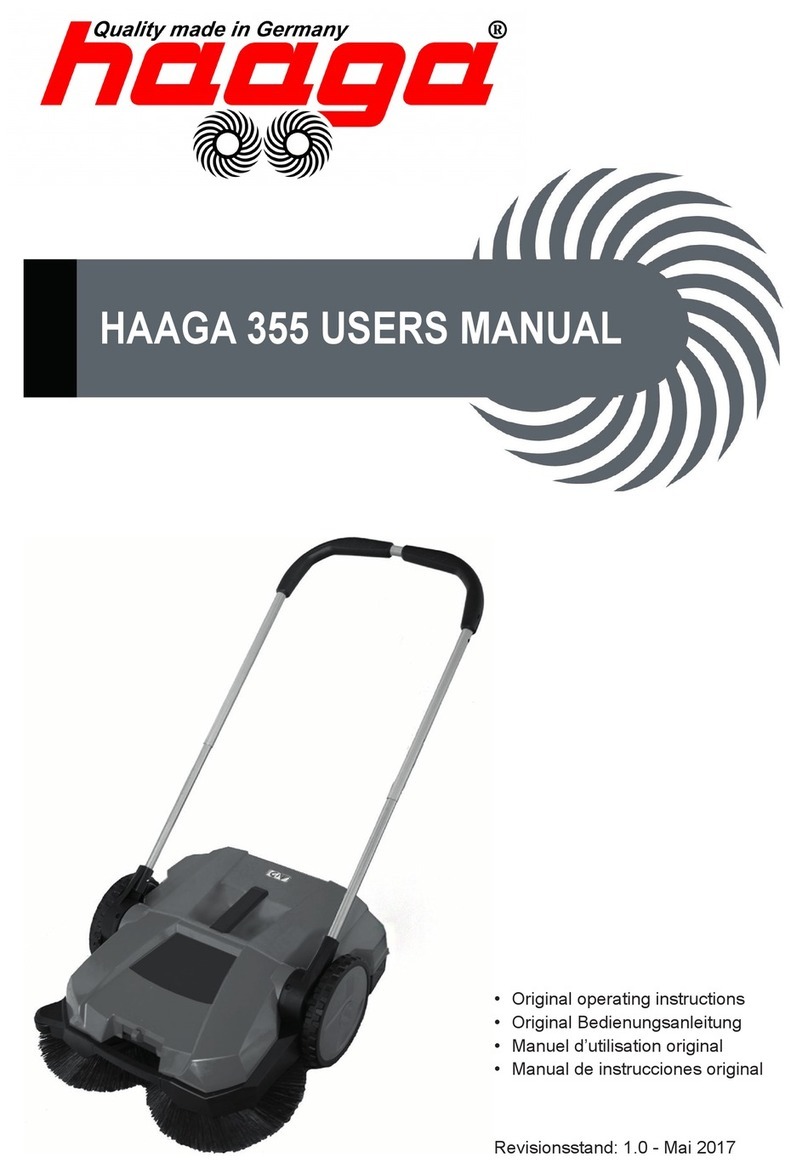
–Donotdriveclosetoasandtrap,ditch,creek,or
otherhazard.
–Reduceyourspeedwhenmakingsharpturnsand
whenturningonhillsides.
–Avoidsuddenstartsandstops.
–Beforebackingup,looktotherearandensurethat
nooneisbehindthemachine.
–Watchoutfortrafcwhennearorcrossingroads.
Alwaysyieldtheright-of-way.
•Stayawayfromthenozzleopeningwhenthemachine
isoperating.Keepallbystandersawayfromthenozzle
openinganddon’tdirectdischargetowardbystanders.
•Donotoperatethemachineundertheinuenceof
alcoholordrugs.
•Lightningcancausesevereinjuryordeath.Iflightning
isseenorthunderisheardinthearea,donotoperate
themachine;seekshelter.
•Ifthetowvehicleenginestallsorthemachineloses
headwayandcannotmakeittothetopofaslope,donot
turnthemachinearound.Alwaysbackthetowvehicle
slowlystraightdowntheslope.
•Donottakeaninjuryrisk!Whenapersonorpet
appearsunexpectedlyinorneartheoperatingarea,stop
operation.Carelessoperation,combinedwithterrain
angles,ricochets,orimproperlypositionedguardscan
leadtothrownobjectinjuries.Donotresumeoperation
untiltheareaiscleared.
•Donottouchtheengineormuferwhiletheengineis
runningorsoonafteritisstopped.Theseareascouldbe
hotenoughtocauseaburn.
RemoteControlOperation
•Readandfollowallinstructions.
•FailuretoabidebySafetyPrecautionsmayresultin
equipmentfailure,lossofauthoritytooperatethe
equipment,andpersonalinjury.
•Useandmaintainproperwiring.Followequipment
manufacturerinstructions.Improper,loose,andfrayed
wiringcancausesystemfailure,equipmentdamage,and
intermittentoperation.
•Changesormodicationsmadetoequipmentnot
expresslyapprovedbythemanufacturerwillvoidthe
warranty
•Owner/operatorsoftheequipmentmustabidebyall
applicableFederal,State,andLocallawsconcerning
installationandoperationoftheequipment.Failureto
complycouldresultinpenaltiesandcouldvoiduser
authoritytooperatetheequipment.
•Makesurethatthemachineryandsurroundingareais
clearbeforeoperating.Donotactivatetheremotecontrol
systemuntilcertainthatitissafetodoso.
•Turnofftheremotecontrolandremovepowerfromthe
baseunitbeforeattemptinganymaintenance.Thiswill
preventaccidentaloperationofthecontrolledmachinery.
•PowercanberemovedfromtheBaseUnitbydetaching
the12-pincablesfromthebaseunitconnectorP1,orby
removingthesourcepowerfromthecircuit.
•Useadampclothtokeepunitsclean.Removemud,
concrete,dirt,etc.afterusetopreventobstructingor
cloggingthebuttons,levers,wiring,andswitches.
•Donotallowliquidtoentertheremotecontrolorbase
unitenclosures.Donotusehighpressureequipmentto
cleantheremotecontrolorbaseunit.
•Disconnecttheradiobaseunitbeforeweldingonthe
machine.Failuretodisconnectthebaseunitmayresultin
destructionofordamagetothebaseunit.
•Operateandstoreunitsonlywithinthespecied
operationandstoragetemperaturesdenedinthe
Specicationsofthisdocument.
MaintenanceandStorage
•Letenginecoolbeforestoringanddonotstorenear
ame.
•Shutofffuelwhilestoringortransporting.Donotstore
fuelnearamesordrainindoors.
•Parkmachineonlevelground.Neverallowuntrained
personneltoservicemachine.
•Usejackstandstosupportcomponentswhenrequired.
•Disconnectbatteryorremovesparkplugwiresbefore
makinganyrepairs.Disconnectthenegativeterminal
rstandthepositivelast.Reconnectpositiverstand
negativelast.
•Removethekeyfromtheignitionswitchtoprevent
accidentalstartingoftheenginewhenservicing,adjusting,
orstoringthemachine.
•Performonlythosemaintenanceinstructionsdescribedin
thismanual.Ifmajorrepairsareeverneededorassistance
isdesired,contactanAuthorizedToroDistributor.
•Toreduceapotentialrehazard,keeptheenginefreeof
excessivegrease,grass,leaves,andaccumulationsofdirt.
Neverwashawarmengineoranyelectricalpartswith
water.
•Besurethatthemachineisinsafeoperatingconditionby
keepingnuts,bolts,andscrewstight.Checkthefanshaft
bearingmountingboltsandnutsfrequentlytobesure
thattheyaretightenedtospecication.
•Iftheenginemustberunningtoperformamaintenance
adjustment,keephands,feet,clothing,andotherpartsof
thebodyawayfromthefanandothermovingparts.
•Donotoverspeedtheenginebychangingthegovernor
settings.Tobesureofsafetyandaccuracy,havean
AuthorizedToroDistributorcheckthemaximumengine
speedwithatachometer.
•Theenginemustbeshutoffbeforecheckingtheoilor
addingoiltothecrankcase.
•Keephandsandfeetawayfrommovingparts.Ifpossible,
donotmakeadjustmentswiththeenginerunning.
5


